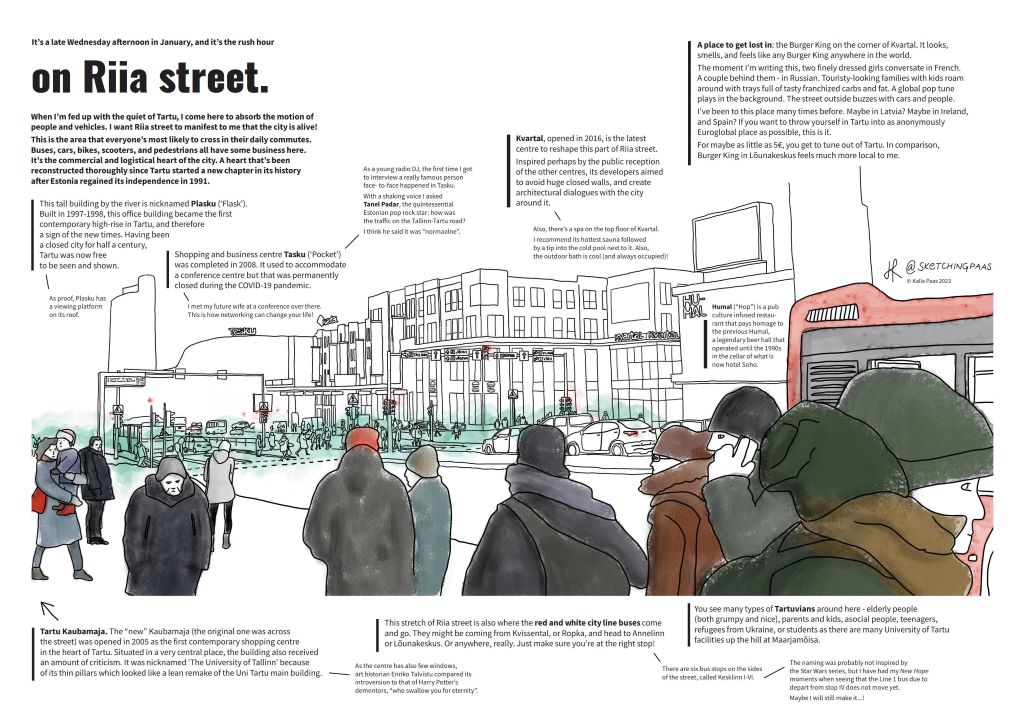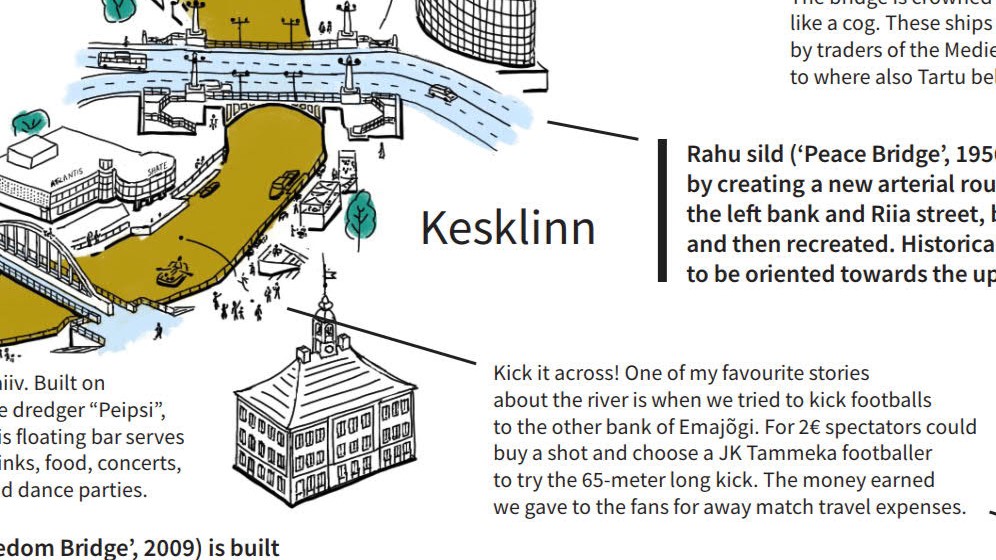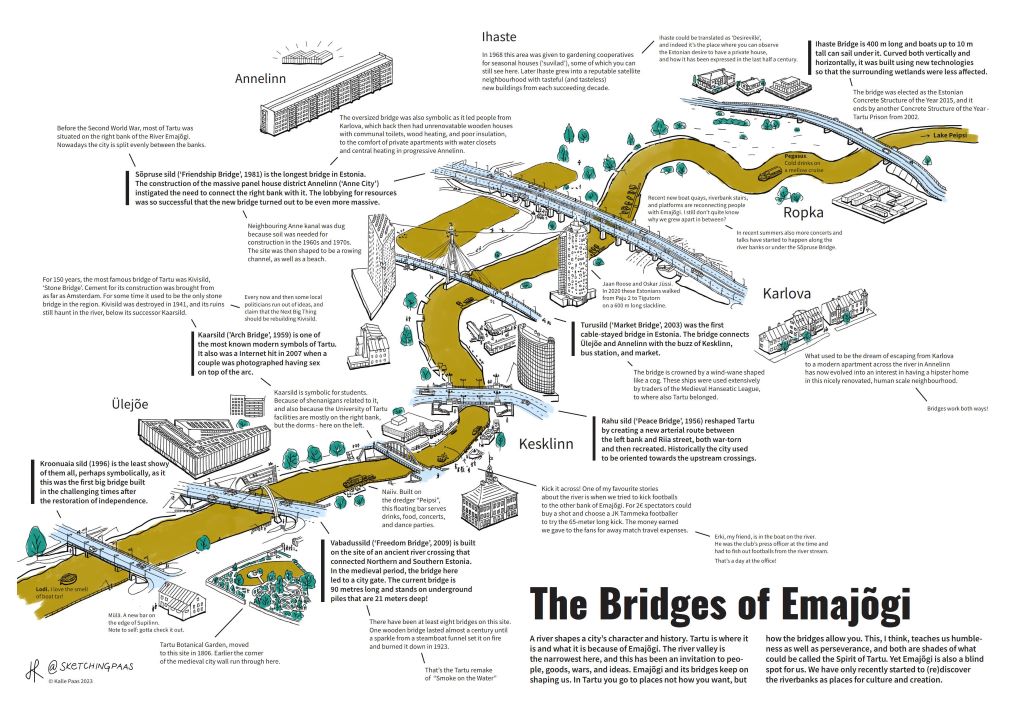🔎 View ‘The Bridges of Emajõgi’ in full size (.jpg)
It’s like in these popular local anecdotes where the Estonian hero keeps on worrying: “…but what do the Finns/Swedes/Germans think of us?” Exactly! As a citizen of the Estonian city of Tartu, I do want to know what you think of us. What are your experiences with us? What do you know about us? And what could you know about us? As a designer and communicator, I do try to not only worry but also find some possible answers.
Of course, there are already some answers, and they are mostly in Estonian. In fact, there are plenty of Estonian language books or brochures about Tartu – what it is, how people have experienced it, and how to live here. I’m sure that there will be plenty of such books and brochures also in the future. That’s why I’m interested in how people communicate with Tartu in other languages, and how the city, its people, culture, possibilities, trends, and history could communicate with them.
I still remember fondly the first days after moving to Tartu in 2006 (I originate from the North of Estonia). It was exciting, as Tartu was a blank page to me. I could get lost and unlost, read, learn, and explore the new city every day. Of course, I had Estonian-speaking books and Estonian-speaking people around me for support. I collected a lot of Tartu stories, created my own, became a Tartuvian, and have proudly remained one.

But being proud does not mean that I love Tartu unconditionally. (And neither does Tartu love me unconditionally.)
My life in Tartu, in relation to its people and culture, possibilities and limitations, sights and sounds has been both deeply passionate and deeply boring, sad and optimistic, tired and defiant, procrastinative and ambitious. I am proud of Tartu and my life in it, and I keep on thinking about how the city could be a better version of itself. (An maybe I could be, too).
Years have passed. My new family ties to other countries, years of work in local football, and for the European Capital of Culture Tartu 2024, as well as my volunteering efforts to support Ukrainian refugees settling in this city, have presented me with a lot of opportunities to speak about Tartu in other languages. Mostly in English, but also a little bit in German, Ukrainian, and Russian.

I’ve shared my Tartu stories with people who’ve come from abroad to visit Tartu or live here, and in return, they have asked me questions and shared their observations of what Tartu is. This is Tartu in English or the international Tartu. While also living in the Estonian Tartu, I find it fascinating how there are simultaneous Tartus that share the same physical space but are vibrantly varied. There are various Tartus based on one’s language, age, activities, and well, attitudes.
In 2022, my curiosity got the best of me and I started a creative journey to research, write, visualize, and share what is Tartu for me and for other people who one day arrived – or will arrive – here for the first time.
You can see some results of this creative journey on this page here or on my #urbansketching Instagram: @sketchingpaas.

If you feel you’d also wish to share your Tartu stories, contact me, and let’s meet over a coffee (or a beer)! I want to know what the Finns/Swedes/etc think of us!
Thank you to the authors of all the sources used – articles on Wikipedia, and elsewhere, as well as a few books. A special mention to Mairo Rääsk for his thorough article “Sõpruse silla lugu” (Postimees, 09.12.2011).